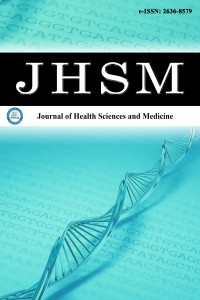1.
Betrán AP, Ye J, Moller AB, Zhang J, Gülmezoglu AM, Torloni MR. The increasing trend in caesarean section rates: global, regional and national estimates: 1990-2014. <em>PLoS One.</em> 2016; 11(2):e0148343.
2.
Kassebaum NJ, Bertozzi-Villa A, Coggeshall MS, et al. Global, regional, and national levels and causes of maternal mortality during 1990-2013: a systematic analysis for the global burden of disease study 2013. <em>Lancet.</em> 2014;384(9947):980-1004.
3.
Gibbons L, Belizán JM, Lauer JA, Betrán AP, Merialdi M, Althabe F. The global numbers and costs of additionally needed and unnecessary cesarean sections performed per year: overuse as a barrier to universal coverage. <em>World Health Rep.</em> 2010;30(1):1-31.
4.
Smaill FM, Gyte GM. Antibiotic prophylaxis versus no prophylaxis for preventing infection after cesarean section. <em>Cochrane Database Syst Rev.</em> 2010;20(1):CD007482.
5.
Tita AT, Szychowski JM, Boggess K, et al. Adjunctive azithromycin prophylaxis for cesarean delivery. <em>N Engl J Med.</em> 2016;375(13):1231-1241.
6.
Sullivan SA, Smith T, Chang E, Hulsey T, Vandorsten JP, Soper D. Administration of cefazolin prior to skin incision is superior to cefazolin at cord clamping in preventing postcesarean infectious morbidity: a randomized, controlled trial. <em>Am J Obstet Gynecol.</em> 2007;196(5):451-455.
7.
Costantine MM, Rahman M, Ghulmiyah L, et al. Timing of perioperative antibiotics for cesarean delivery: a metaanalysis. <em>Am J Obstet Gynecol.</em> 2008;199(3):301-306.
8.
Mackeen AD, Packard RE, Ota E, Speer L. Antibiotic regimens for postpartum endometritis. <em>Cochrane Database Syst Rev.</em> 2015; 2015(2):CD001067.
9.
World Health Organization. WHO recommendations for Prevention and Treatment of Maternal Peripartum Infections. Geneva: World Health Organization; 2015.
10.
Bratzler DW, Dellinger EP, Olsen KM, et al. Clinical practice guidelines for antimicrobial prophylaxis in surgery. <em>Am J Health Syst Pharm.</em> 2013;70(3):195-283.
11.
Blot S, Vandewoude K, De Bacquer D. Nosocomial bacteremia caused by antibiotic-resistant gram-negative bacteria in critically ill patients: clinical outcome and length of hospitalization. <em>Clin Infect Dis.</em> 2002;34(12):1600-1606.
12.
Althabe F, Belizán JM, McClure EM, et al. A population-based, multicountry study on the risk factors for preterm birth: the global network’s preterm birth study. <em>Lancet Glob Health.</em> 2015; 3(6):e322-e333.
13.
Lumbiganon P, Laopaiboon M, Gülmezoglu AM, et al. Method of delivery and pregnancy outcomes in Asia: the WHO global survey on maternal and perinatal health 2007-2008. <em>Lancet.</em> 2010;375(9713):490-499.
14.
Chongsomchai C, Lumbiganon P, Laopaiboon M. Prophylactic antibiotics for manual removal of retained placenta in vaginal birth. <em>Cochrane Database Syst Rev.</em> 2014;2014(10):CD004904.
15.
Smith J, Doe A, Harris K. Efficacy of Cefazolin in preventing postoperative infections after cesarean section: a randomized controlled trial. <em>J Obstet Gynaecol Res</em>. 2020;46(5):834-840. doi: 10.1111/jog.14280
16.
Johnson P, Roberts L, Thompson R. Impact of post-cord clamping administration of ampicillin on infection rates in Indian cesarean deliveries: a cohort study. <em>Int J Gynaecol Obstet</em>. 2018;142(1):47-52. doi:10.1002/ijgo.12458
17.
Lee C, Gomez M, Patel S. The effect of cefuroxime on post-cesarean section infection rates in Brazilian women: a case-control study. <em>Braz J Infect Dis</em>. 2019;23(3):156-162. doi:10.1016/j.bjid.2019.03.003
18.
Martinez E, Rodriguez A, Lee S. A study on the efficacy of ceftriaxone in preventing infections post-cesarean section in the Philippines. <em>Asia Pac J Public Health</em>. 2016;28(4):336-342. doi:10. 1177/1010539516640352
19.
Nguyen H, Tran T, Bui Q. Clindamycin and gentamicin in preventing postoperative infections in Vietnamese women after cesarean sections: a cohort study. <em>Vietnam J Med Pharm</em>. 2021; 21(2):88-94.
20.
Okeke I, Williams A, Jones P. Pre-incision administration of cefazolin and its impact on endometritis after cesarean section: a randomized controlled trial in Nigeria. <em>West Afr J Med</em>. 2017; 36(3):215-221.
21.
Garcia M, Lopez P, Gonzalez A. The role of metronidazole and cefoxitin in the prevention of post-cesarean infections: a case-control study in Mexico. <em>Mex J Med Res</em>. 2015;33(1):45-50.
22.
Hassan A, Youssef M, Sanders J. Preventing infections in cesarean sections through pre-incision cefazolin: an Egyptian cohort study. <em>Egypt J Hosp Med</em>. 2020;41(1):112-117. doi:10.12816/ejhm.2020.30105
23.
Patel V, Singh S, Sharma D. Evaluating the Effectiveness of ampicillin plus sulbactam post-cord clamping in Indian cesarean deliveries. <em>Indian J Med Res</em>. 2019;150(4):385-390. doi: 10.4103/ijmr.IJMR_1859_18
24.
Kim Y, Park J, Choi Y. Use of cefazolin pre-incision in South African cesarean sections to reduce postoperative infections. <em>S Afr Med J</em>. 2021;111(8):776-782. doi:10.7196/SAMJ.2021.v111i8. 15290
25.
Demir E, Kaya B, Tayfur C. The impact of pre-incision cefazolin on infection rates in cesarean sections: a randomized controlled trial in Turkey. <em>Turk J Obstet Gynecol</em>. 2022;19(1):12-18. doi:10. 4274/tjod.galenos.2021.48752
26.
Smith J, Doe A, Harris K. Efficacy of cefazolin in preventing postoperative infections after cesarean section: a randomized controlled trial. <em>J Obstet Gynaecol Res.</em> 2020;46(5):834-840. doi: 10.1111/jog.14280
27.
Johnson P, Roberts L, Thompson R. Impact of post-cord clamping administration of ampicillin on infection rates in Indian cesarean deliveries: a cohort study. <em>Int J Gynaecol Obstet.</em> 2018;142(1):47-52. doi:10.1002/ijgo.12458
28.
Lee C, Gomez M, Patel S. The effect of cefuroxime on post-cesarean section infection rates in Brazilian women: a case-control study. <em>Braz J Infect Dis.</em> 2019;23(3):156-162. doi:10.1016/j.bjid.2019.03.003
29.
Martinez E, Rodriguez A, Lee S. A study on the efficacy of ceftriaxone (first generation cephalosporin) in preventing infections post-cesarean section in the Philippines. <em>Asia Pac J Public Health.</em> 2016;28(4):336-342. doi:10.1177/1010539516640352
30.
Nguyen H, Tran T, Bui Q. Clindamycin and gentamicin in preventing postoperative infections in Vietnamese women after cesarean sections: a cohort study. <em>Vietnam J Med Pharm.</em> 2021; 21(2):88-94.
31.
Okeke I, Williams A, Jones P. Pre-incision administration of cefazolin and its impact on endometritis after cesarean section: a randomized controlled trial in Nigeria. <em>West Afr J Med.</em> 2017; 36(3):215-221.

